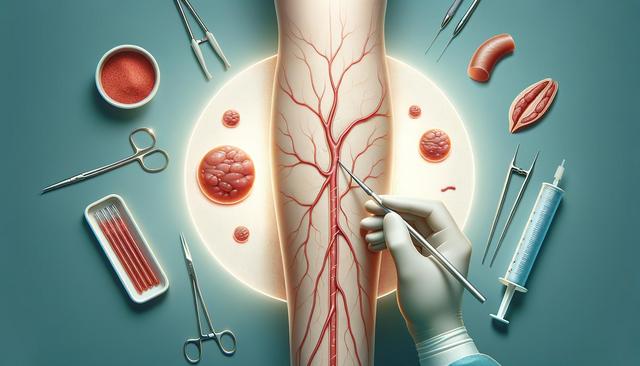Understanding Varicose Veins and Their Impact
Varicose veins are swollen, twisted veins that typically appear in the legs and feet due to faulty valves that allow blood to pool. This condition is more than just a cosmetic concern; it can cause discomfort, pain, and even complications such as skin ulcers or blood clots if left untreated. Factors such as genetics, obesity, pregnancy, and prolonged standing or sitting can increase the risk of developing varicose veins. For many individuals, especially those relying on Medicaid, finding a treatment that is both effective and affordable is crucial.
Patients experiencing symptoms such as leg heaviness, cramping, throbbing, or visible bulging veins should consider consulting a healthcare provider. Early diagnosis can prevent the condition from worsening and provide more treatment options. With advancements in medical procedures, varicose veins embolization has emerged as a valuable technique to manage this condition with fewer complications and quicker recovery times compared to traditional surgery.
What is Varicose Veins Embolization?
Varicose veins embolization, also known as endovascular embolization, is a minimally invasive procedure designed to close off and eliminate problematic veins. During the procedure, a small catheter is inserted into the affected vein, through which a special embolic agent is delivered. This agent blocks the vein, redirecting blood flow to healthier vessels and ultimately improving circulation in the affected area.
The procedure is typically performed under local anesthesia and involves minimal discomfort. Recovery is generally quick, allowing patients to return to normal activities within a few days. Benefits of varicose veins embolization include:
- Minimized scarring and low risk of infection
- Reduced swelling and pain
- Improved appearance of the legs
- Shorter recovery time compared to surgical methods
This method is particularly suitable for patients who may not be ideal candidates for surgical intervention due to age, underlying health conditions, or personal preference.
Varicose Veins Treatment with Medicaid
Access to treatment is a significant concern for many patients, especially those covered by Medicaid. Fortunately, varicose veins embolization is often considered a medically necessary procedure when symptoms interfere with daily life or pose health risks. As a result, Medicaid may cover part or all of the costs associated with the treatment, depending on the specific state guidelines and individual eligibility.
To navigate this process effectively, patients should:
- Schedule a consultation with a healthcare provider experienced in vascular treatments
- Discuss symptoms in detail to establish medical necessity
- Obtain a referral if required by the Medicaid plan
- Ensure the provider accepts Medicaid and is authorized for reimbursement
Understanding the requirements and coverage options can help patients make informed decisions and reduce the financial barriers to receiving care.
Evaluating Candidacy and Preparing for the Procedure
Not every patient with varicose veins is an ideal candidate for embolization. A thorough evaluation typically includes a physical examination and imaging tests such as an ultrasound to assess vein structure and blood flow. These steps help determine the severity of the condition and the best course of treatment. Medical history, including any existing conditions or medications, is also taken into account to ensure safety and effectiveness.
Once approved for the procedure, patients are given preparation guidelines, which may include:
- Avoiding certain medications that affect blood clotting
- Fasting for a few hours before the procedure
- Arranging for transportation home, as driving immediately afterward is not recommended
- Wearing loose, comfortable clothing on the day of the procedure
Following these instructions can contribute to a smoother experience and promote better outcomes post-treatment.
Recovery and Long-Term Care
After varicose veins embolization, patients usually notice a reduction in symptoms within a few days. Mild bruising or swelling around the insertion site is common but typically resolves without intervention. Compression stockings may be recommended to support circulation and aid in the healing process. Most individuals can resume light activities within a day or two, although strenuous exercise should be avoided for a short period as advised by the physician.
Long-term care involves maintaining a healthy lifestyle to prevent recurrence. This includes:
- Staying active with regular walking or low-impact exercise
- Maintaining a healthy weight
- Elevating the legs when resting
- Avoiding prolonged sitting or standing
Regular follow-up visits with a healthcare provider are essential to monitor progress and address any new symptoms. Patients using Medicaid should ensure ongoing coverage and verify which follow-up services are included under their plan to avoid unexpected expenses.
Conclusion: Making Informed Choices with Medicaid Support
Varicose veins embolization offers a less invasive and effective treatment option for individuals dealing with the discomfort and complications of varicose veins. For those enrolled in Medicaid, this procedure may be an accessible solution, provided that medical necessity is established and appropriate steps are taken to comply with coverage requirements. By working closely with qualified healthcare providers and understanding the specifics of their Medicaid plan, patients can take proactive steps toward improved vascular health and overall well-being.











